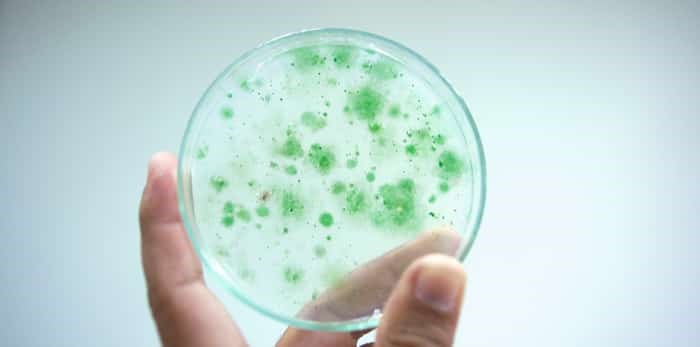 Photo: Colony of blue green algae in culture medium plate / Shutterstock
Photo: Colony of blue green algae in culture medium plate / Shutterstock
It might look just like grass clippings on the surface of water - but it may also pose a serious health threat.
So, what exactly is it?
Blue-green algae are bacteria that grow in shallow, slow moving or still water, and may look like scum, grass clippings, fuzz or globs. They come in a range of colours including blue-green, greenish-brown, brown, or pinkish-red, and often smell musty or grassy. When the algae increases, a large dense mass will form, which is referred to as a 'bloom.' With this in mind, toxins may still be in the water even if the blooms aren't visible.
People may become very ill after coming in contact with the blooms. Northern Health notes that those, "who ingest water containing toxins from blue-green algae, may experience skin irritation, rash, sore throat, sore red eyes, swollen lips, fever, nausea and vomiting or diarrhea."
Symptoms typically appear within one to three hours after coming into contact with the algae, and they usually resolve within one or two days.
Which parts of B.C. are affected by the blooms?
HealthLinkBC warns that warming summer weather may cause blooms across lakes in northern B.C. However, it is possible for other parts of the province, including the Lower Mainland, to have blooms.
"Hatzic Lake in Mission was closed for swimming a short period of time last year due to reports of blue-green algae. No serious illnesses or deaths were connected to the bloom. We have no confirmed reports of the algae this year," Tasleem Juma, Senior Consultant, Public Affairs, Fraser Health, told Vancouver Is Awesome in an email.
"In an effort to support the public in making informed decisions about where they should go swimming or enjoy water activities, Fraser Health posts regular beach condition reports on its website. At this time, only Whonnock Lake beach in Maple Ridge is experiencing higher levels of E.coli."
V.I.A. also spoke with Tiffany Atkins, Communications Leader, Vancouver Coastal Health, who reported that there haven't been any issues with blue-green algae in the VCH portion of the lower mainland. She added in an email, however, that, "Every water system has an emergency plan and would address options in light of such a bloom."
Visitors to northern B.C., as well as residents, should take the following precautions:
- Avoid all contact with blue-green algae blooms. If contact occurs, wash with tap water as soon as possible.
- Do not swim or wade (or allow your pets to swim or wade) in any areas where blue-green algae is visible.
- Do not drink or cook with untreated water directly from any lake at any time. Boiling lake water will not remove the toxins produced by blue-green algae.
- An alternate source of drinking water should also be provided for pets and livestock. Pet owners should be wary of allowing pets to walk off-leash where they may be able to drink lake water – illnesses are a common outcome.
Northern Health adds that weather and wind conditions can cause algae blooms to move from one location in the lake to another. Given the shifting nature of algae blooms it is safest to apply the most rigorous precautions around blooms, or areas of the water body historically affected by blooms.


